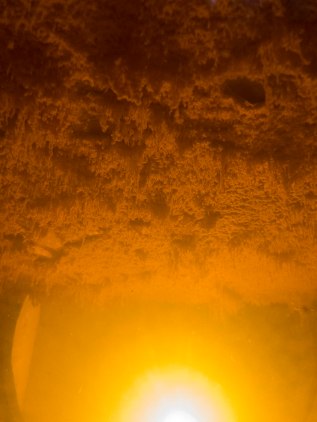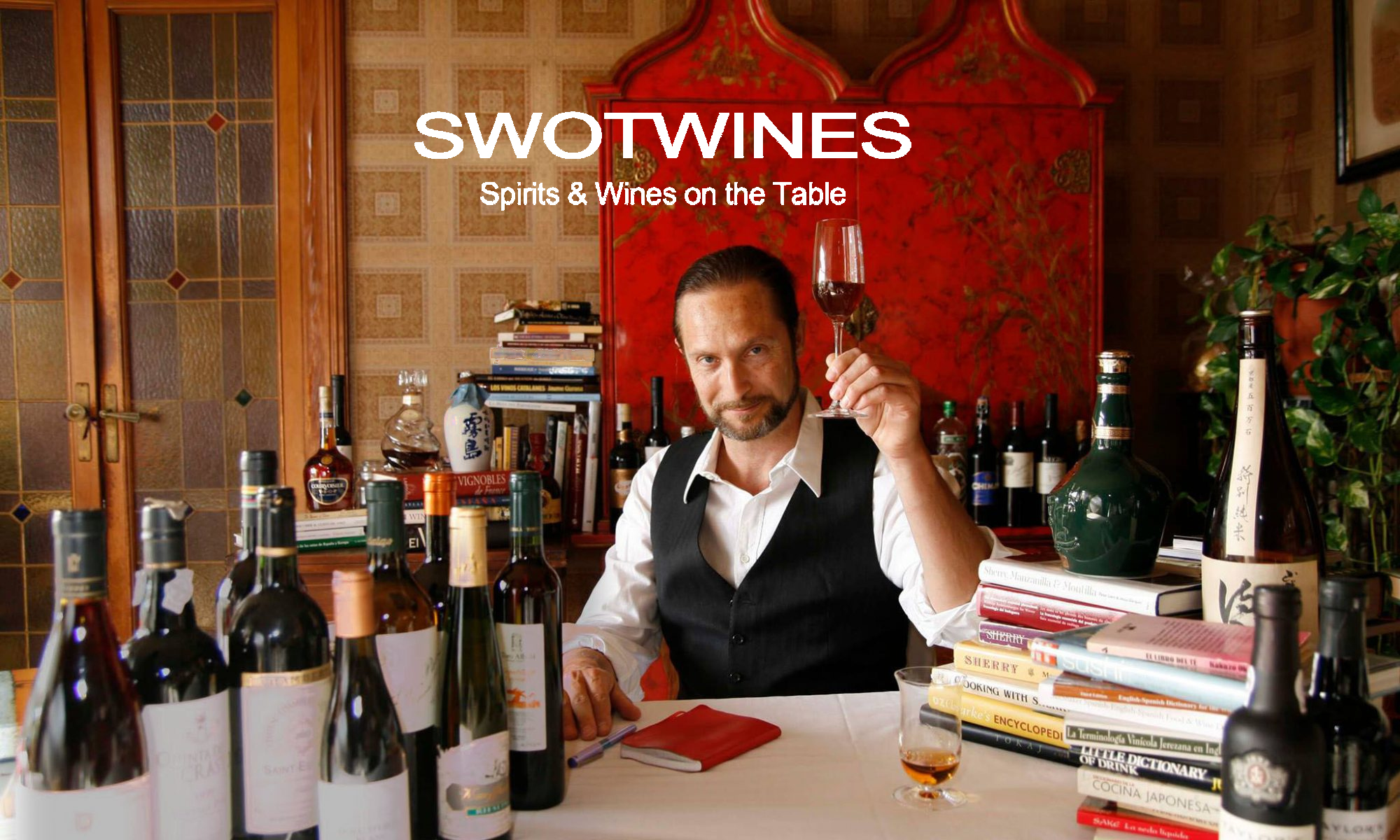Monday, 13th April. 12:45 am. It was a windy and sunny day. My friend Manel and I just ended up our visit to Ximénez-Spínola (I wrote about it at my previous post), grabbed a taxi and headed to El Maestro Sierra, one of my favorite bodegas. It was late, so I was not very sure if Ana would be available.
windy and sunny day. My friend Manel and I just ended up our visit to Ximénez-Spínola (I wrote about it at my previous post), grabbed a taxi and headed to El Maestro Sierra, one of my favorite bodegas. It was late, so I was not very sure if Ana would be available.
I have titled this post as “Discovering…” in the sense that it can be new for some readers, as I discovered El Maestro Sierra seven years before in one of my trips to the area. Since then, it became one of the most respectful and admired winery for me. Why? Perhaps because of the unpretentious architecture that transports us to another century? Because of the astonishing quality that they continue producing regularly? Due to the strong personality of women -yes, women- leading the winery? Is it a mix of the previous ones?
the area. Since then, it became one of the most respectful and admired winery for me. Why? Perhaps because of the unpretentious architecture that transports us to another century? Because of the astonishing quality that they continue producing regularly? Due to the strong personality of women -yes, women- leading the winery? Is it a mix of the previous ones?
El Maestro Sierra was founded by José Antonio Sierra in 1830. He was a well-renowned cooper that was working for González Byass (that is why the term “Maestro” is used, as “Maestro” comes from Master). He started working as almacenista (a term used at the sherry jargon for those companies authorized for ageing sherry, but not for selling it to the final costumer) and struggled among the aristocratic wineries that used to control the sherry business. Incidentally, the label depicting a hunting scene with a hare pursued by riders and dogs symbolizes those struggles he suffered. The company changed hands between family members for the years to come. When Antonio Borrego passed away in 1976 his wife, Pilar Plá Pechovierto, picked up the baton. Till this day. She also struggled among a patriarchal structure, pressed to abandon the business and to pass it to others (she explains this point quite well at the film “El misterio del palo cortado”). She endured it all to the day with the support of her daughter María del Carmen Borrego Plá (a very well known historian specialized in the history of Jerez).
not for selling it to the final costumer) and struggled among the aristocratic wineries that used to control the sherry business. Incidentally, the label depicting a hunting scene with a hare pursued by riders and dogs symbolizes those struggles he suffered. The company changed hands between family members for the years to come. When Antonio Borrego passed away in 1976 his wife, Pilar Plá Pechovierto, picked up the baton. Till this day. She also struggled among a patriarchal structure, pressed to abandon the business and to pass it to others (she explains this point quite well at the film “El misterio del palo cortado”). She endured it all to the day with the support of her daughter María del Carmen Borrego Plá (a very well known historian specialized in the history of Jerez).
In 1992, El Maestro Sierra started bottling  sherry under its own brand. It is necessary to remember that Spain became member of the EU in 1989, and almacenistas were not allowed to sell wines under their own brands up to that date. The quality of their products was well known before, but from that day till now they were not in need to sell their sherry to other companies. They hired the oenologist Ana Cabestrero on 2004 and since then she is the mastermind of the winery.
sherry under its own brand. It is necessary to remember that Spain became member of the EU in 1989, and almacenistas were not allowed to sell wines under their own brands up to that date. The quality of their products was well known before, but from that day till now they were not in need to sell their sherry to other companies. They hired the oenologist Ana Cabestrero on 2004 and since then she is the mastermind of the winery.
It was nice to share opinions with her at the bodega. One realizes about the potential of a dynamic system as the criaderas y soleras – nursing system-. We tasted quite a lot of sherry of the same type from different butts and it was amazing to realize how different can be the velo de flor in each butt, regardless the distance between them. I knew about these differences long time ago and I got similar impressions in other bodegas at the Jerez district and Montilla-Moriles, but I felt the differences on flavor wider here at El Maestro Sierra. Perhaps it has something to do the fact that the bodega’s location is such that the sea breeze is stronger than in other locations within the city; and at the same time, the existing water table ensures a constant humidity. This makes me think about the importance of the specific location and orientation of any bodega to strengthen more or less the development of the velo de flor. I wonder: What if the urban development of Jerez continues and residential facilities and office buildings are constructed near those traditional bodegas that are based in the city? Will the growth of these yeasts be modified? Should be established a protected area around these historical bodegas to ensure the free circulation of air to protect these liquid treasures? Tough questions for a country in crisis.
bodega. One realizes about the potential of a dynamic system as the criaderas y soleras – nursing system-. We tasted quite a lot of sherry of the same type from different butts and it was amazing to realize how different can be the velo de flor in each butt, regardless the distance between them. I knew about these differences long time ago and I got similar impressions in other bodegas at the Jerez district and Montilla-Moriles, but I felt the differences on flavor wider here at El Maestro Sierra. Perhaps it has something to do the fact that the bodega’s location is such that the sea breeze is stronger than in other locations within the city; and at the same time, the existing water table ensures a constant humidity. This makes me think about the importance of the specific location and orientation of any bodega to strengthen more or less the development of the velo de flor. I wonder: What if the urban development of Jerez continues and residential facilities and office buildings are constructed near those traditional bodegas that are based in the city? Will the growth of these yeasts be modified? Should be established a protected area around these historical bodegas to ensure the free circulation of air to protect these liquid treasures? Tough questions for a country in crisis.
We continued our visit sipping from some more butts and several bottles. They were fantastic! The VORS are my favorite and, among them, the Oloroso 1/7. The term VORS (Very Old Rare Sherry) indicates that the average age is 30 years minimum… so I wonder why a wine with an ageing that averages about 100 years needs to be labeled as VORS? Perhaps, it would be interesting to add to this label a kind of “last name” to indicate a more accurate age and hence, to supply extra information to the potential customer. Let’s see what will happen in the future, because the Consejo Regulador could well introduce some amendments to the existing regulations.
Let us put aside these considerations and focus on their wines. They produce 11 wines and 1 brandy, as follows:
- Fino: a dry wine with an average age of 6 years. It has 6 scales (5 criaderas + solera). Production: 20.000 bottles.
- Amontillado 12 años: a dry wine with an average age of 12 years. Production: 10.000 bottles.
- Amontillado 1830: a dry wine with an average age of 40 years, from the solera dating back to the founding of the company. It is very peculiar, as it is aged in 2.000 litres’ butts which provides a particular oxidation. Production: 300 bottles.
- Palo Cortado: a dry wine with an average age of 20 years. Production: 300 bottles.
- Oloroso 15 años: a dry wine with an average age of 15 years. Production: 15.000 bottles.
- Oloroso 1/14: a dry wine with an average age of 50 years. Production: 300 bottles.
- Oloroso Extra Viejo 1/7: a bone dry wine with an average age of 100 years. Production: 150 bottles.
- Amoroso: a medium type. It is a blend of a 90% of 15 years old Oloroso and 10% of Pedro Ximénez, plus 4 years extra of ageing once blended. Average production: 10.000 bottles.
- Cream: It is a blend of a 70% of 15 years old Oloroso and 30% of 5 years old Pedro Ximénez, plus 4 years extra of ageing once blended. Average production: 10.000 bottles.
- Pedro Ximénez: a sweet wine with a sugar content of 350 gr/litre and an average age of 5 years. Production: 15.000 bottles.
- Pedro Ximénez Viejísimo: a sweet wine with a sugar content of 495 gr/litre and an average age of 50 years. It is not fortified, so it has a natural strength of 10.5% vol. Production: 300 bottles.
- Brandy: Gran Reserva. It is made from wine liqueur of 30 years and aged in Oloroso and Pedro Ximénez butts by the traditional system of criaderas y soleras. It has a sugar content of 15 gr/litre, and alcohol contents of 40 % vol. Production: 250 bottles.
I will not provide my tasting notes as the ones set at their official web page are good enough.
The production is not the same every year. Ana takes care of all the soleras and authorizes sacas under her responsibility only, in order to ensure that the quality of these soleras is kept. It is interesting to mention they draw off the VORS wines on demand and continue doing the whole process manually.
Ana takes care of all the soleras and authorizes sacas under her responsibility only, in order to ensure that the quality of these soleras is kept. It is interesting to mention they draw off the VORS wines on demand and continue doing the whole process manually.
I will be satisfied if you were not aware about this bodega and this post taught you something. El Maestro Sierra is for sure among the top five wineries in Jerez.
To read more:

